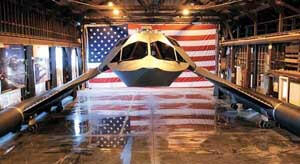The world of maritime defense is evolving swiftly, with technological advancements leading the charge. Among the most intriguing developments is the Stealth Fast Attack Watercraft, codenamed Juliet. Designed with cutting-edge technology and state-of-the-art features, Juliet is set to redefine naval warfare as we know it.
Unveiling the Juliet
Juliet embodies the pinnacle of stealth technology and advanced naval design. Its sleek structure is optimized for minimizing radar signature, making it nearly invisible to traditional detection methods. This characteristic is crucial for modern-day naval operations, wherein stealth can offer a tactical advantage over adversaries.
Key Features and Specifications
The Juliet is equipped with an array of features tailored for rapid and covert operations. Below is a comprehensive overview of its specifications:
| Specification | Details |
|---|---|
| Length | 45 meters |
| Top Speed | 45 knots |
| Range | 600 nautical miles |
| Crew Capacity | 12 personnel |
| Armament | Missiles, torpedoes, and a close-in weapon system (CIWS) |
| Stealth Features | Radar absorbent materials, reduced thermal signature |
Design Philosophy
The design philosophy behind Juliet focuses on three main principles: stealth, speed, and flexibility. The watercraft’s hull is constructed using radar-absorbent materials, and its shape reduces the radar cross-section significantly. This ensures that Juliet can approach hostile zones undetected, delivering its payload with precision.
Speed is another critical component. A top speed of 45 knots allows Juliet to outmaneuver larger vessels and rapidly deploy or retreat as necessary. This speed is not just for evasion but also for rapid response during a confrontation, making it a formidable player in any naval conflict scenario.
Juliet’s flexibility lies in its modular weapon systems, allowing it to adapt to various mission requirements. Whether engaging in high-speed pursuits or laying low in stealth mode, Juliet can modify its tactics according to the demands of the mission.
Role in Modern Naval Warfare
In the theater of modern naval warfare, the use of stealth and speed are more than advantageous—they are essential. The Juliet excels in littoral (nearshore) combat scenarios, where its ability to operate undetected enables it to perform reconnaissance, deploy special forces, and enact surprise attacks. This vessel exemplifies the ‘hit-and-run’ tactics that are often necessary in such battles.
Additionally, Juliet’s onboard sensors and communications technology ensure it remains connected with a wider network of naval assets, facilitating real-time data sharing. This network-centric approach ensures informed decision-making and increases the efficacy of coordinated assaults.
Future Prospects
As naval threats evolve, so too must the tools used to counter them. The Juliet represents just the beginning of a new era in stealth technology for maritime forces. Future iterations may involve unmanned capabilities, enhanced AI integration for autonomous operations, and further improvements in stealth technology.
As nations continue to vie for supremacy on the world stage, the development of such advanced watercraft is a strategic necessity. The Juliet demonstrates the importance of investing in technological innovation to maintain a tactical edge in military operations.
While the exact deployment strategies and operational details remain classified, the potential of the Stealth Fast Attack Watercraft Juliet is undeniable. Its blend of speed, stealth, and adaptability sets a new benchmark for marine combat vessels, hinting at how future warfare might unfold on the high seas.









